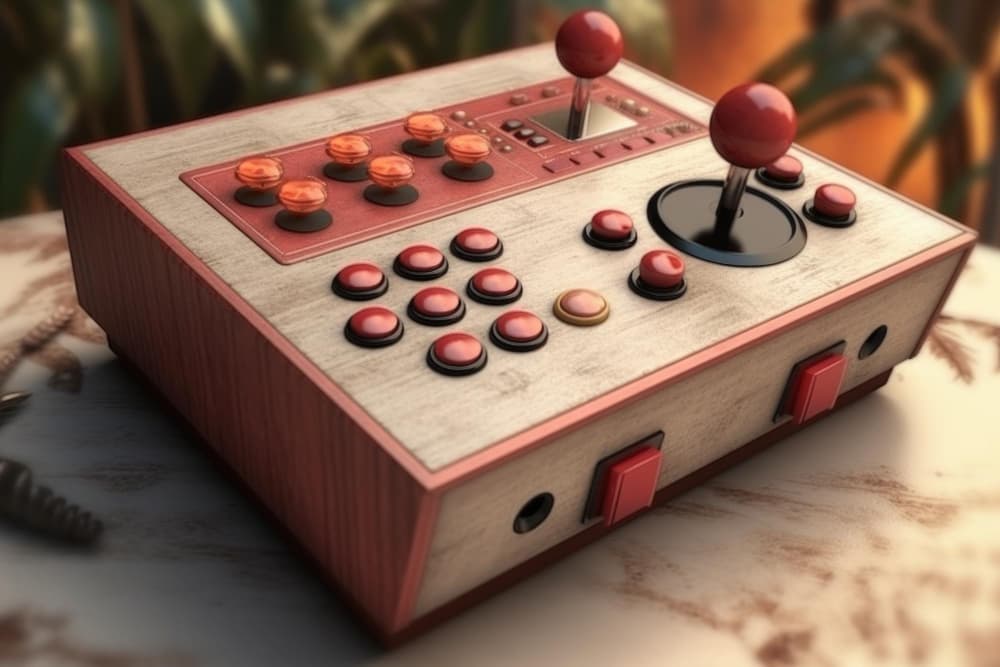With the downturn of the modern AAA game development industry, indie games—games developed by independent, often small studios or even by a single developer—are on the rise. The potential for making indie games is amazing compared to the last decade. Indie devs often have access to modern game engines with top solutions like Unreal Engine and Unity, ranging from modern-day gameplay and graphics to retro-inspired bangers. Some developers even take it a step further: why develop an imitation of a retro game if you can use the real deal –although modified to be as convenient and robust as possible? In this article, we’re introducing QB64 features and why hobbyists are choosing it for their projects.
QB64: Nostalgia Chasing Or Real Potential?
QB64 is as close as you can get to QBasic – the original hobbyist language of the 1990s. It does sound weird to use such an ancient programming language, though! A very valid question is common here: is it just nostalgia chasing and torturing yourself for some vanity project, or does QB64 have some practical use? Well, depends on how you use it, of course! Jokes aside, QB64 has some key features that make it a very solid choice for retro-based gaming projects.
- Ease of learning. QB64 retains QBasic’s intuitive syntax. It wasn’t called “Quick Beginner’s All-purpose Symbolic Instruction Code” for nothing! QB64 is far easier to pick up than even the easiest “practical” languages (like Python).
- Compatibility. QB64 adds compatibility to modern operating systems (Win11/10, Linux, MacOS) and combines it with built-in emulation tools. Revive old QBasic games for modern systems with QB64!
- Community. Last but definitely not least, QB64 is an open-source project, meaning there’s a whole community of hobbyists supporting it. Finding answers to your questions won’t be as hard as it’d be with actual ancient programming languages.
There’s a bunch more other reasons for sticking with QB64, like increased performance, support for graphics and audio libraries, etc., but all that goes without saying. Remember, QB64 isn’t the ancient dinosaur like its predecessor – it’s a fully upgraded (and upgradeable) version of that dinosaur.
What Kind of Stuff Can Be Made With QB64
Even though QB64 is quite basic, it handles many tasks natively that other programming languages would require creative solutions for. The most obvious example is writing or porting old games or simulating old, vintage tech. There’s a bit more than that to it: let’s see what QB64 has in store for us.
QB64 Retro Games
Well, first things first, this is the most common application for QB64. Simple games like Pong, Tetris, and Snake are the bread and butter of QB64. Retro board games are also fun to make and play: Chess, Checkers, Go, Shogi, etc. Some enthusiasts push QB64 to the limit with commercially released large games that simulate modern game mechanics with engineering solutions from three decades ago. These are only for the true fans, though!
QB64 Emulators
Emulation with QB64 is possible. Of course, this includes running old games made with QBasics, thanks to its in-built emulation possibilities. Additionally, QB64 allows us to emulate old hardware altogether – early computers or even simpler logic-based machines of the 80s. Realistically, it’s gonna be stuff like old-timer handhelds.
QB64 Slots and Card Games
Casino games like slots are a common creation among QB64 enthusiasts. Of course, they’d look too retro for the tastes of actual online casinos – plus, they’d probably not be able to run in-browser. But they’re possible! Card gambling games like Poker and Blackjack are also popular. What’s important is that QB64 can handle randomness – therefore, it can support gambling games and betting logic.
QB64 Graphics Simulators
If you miss the early PC aesthetics, QB64 is perfect for screensavers. Its graphics handler allows us to write fractal generators, pixel art demos, simple animations and other such things. Write your own or visit the project’s site to pick up some of the colorful examples.
Picking Up QB64
QB64 is a perfect hobbyist language to learn. You can get into it easily as a breeze without any programming experience. In fact, QB64 is a perfect starter language. Access it in some very easy steps:
- You can find the QB64 package on the official QB64 site. QB64 is available for all platforms: Windows, Linux, and macOS. It’s also supported by x32-bit Windows architecture (the project started as QB32).
- Learn documentation on the QB64 wiki. This resource covers everything from jump-start notes for beginners to references and examples of interesting solutions.
- Check the forums! The project’s forums are back up and they’re very active. Share your projects and get tips.
- Subscribe to our courses. Once you feel like you’ve got the foundation down, explore programming with our QB64 courses. We’ll be covering the basics of syntax to more advanced writing in QB64 – and even more!
Our courses assist with the first steps of understanding the QB64 interface—it is quite old school—to the basics of user inputs and, eventually, the very first program. As we learn QB64, we’ll discover how to experiment with graphics and then build our own simple game!
